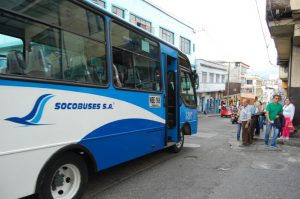Transportation MRV: It's Complicated
- Chuck Kooshian
- Jan 8, 2018
- 2 min read

As the international community moves on from negotiating climate change agreements to implementing agreed actions that reduce GHG emissions consistent with nationally determined contributions (NDCs), measuring results will take on renewed importance. However, assessing the GHG reductions is not always straightforward, particularly in sectors like transportation where the range of potential mitigation measures and the significance of individual and group behavior add to the complexity of attributing emissions reductions to the implemented action. In a recent webinar titled “How to MRV complex urban transport programmes or plans”, CCAP offered guidance on how to overcome the different challenges to measuring the impact of transportation mitigation measures. This webinar drew from a 2017 manual published by the UNFCCC and GIZ and authored by CCAP that helps guide mitigation action implementers as they select and apply measurement, reporting and verification (MRV) methodologies and tools for the transportation sector.
Individual transportation actions can be analysed using a variety of specific methodologies, and many are described in the manual. Complex urban transport programs that incorporate a varied and changing menu of tactics in pursuit of lower transport emissions should be approached differently.
The webinar compared two possible approaches: the urban transport GHG inventory-based approach used in the Mobilise Your City Partnership for capturing the effects of Sustainable Urban Mobility Plans (SUMPs) and a control-group approach developed by CCAP to account for the effects of Transit-Oriented Development (TOD) in Colombia.
While both methodologies may seem complicated on the surface, they actually simplify the data collection requirements so that a program with multiple actions can be evaluated. The top-down approach of the inventory method allows the overall effects of a program to be monitored over an entire city or region. The innovative methodological use of a control-group, by contrast, allows the overall effects of a program to be monitored at the level of the pilot neighborhood. The two methods can be used simultaneously to measure, report and verify the effects of complex NAMAs or mitigation actions at multiple levels.
The webinar also featured Arnaud Godet, environmental specialist and coordinator of CIUDAT, the center for sustainable urban development supported by the NAMA Facility grant and housed within the national development bank, FINDETER, in Colombia. He offered more details on their experiences preparing to apply the control-group approach to the TOD NAMA pilot projects being implemented at the city level. CIUDAT is working with the cities on monitoring land use changes and other indicators that help all parties evaluate implementation progress, and is also developing monitoring and evaluation guidance for cities.
In addition to good data collection and careful coordination between local implementers and national monitoring institutions, selecting an appropriate methodology is important to teasing out the emissions impacts of different urban transportation policies and programs. Moreover, having good estimates of the impacts of policies and programs can help with subsequent assessments of progress on a sector-scale as well as progress in meeting broader sub-national climate mitigation goals and NDCs.





شيخ روحاني
رقم شيخ روحاني
الشيخ الروحاني
الشيخ الروحاني
شيخ روحاني سعودي
رقم شيخ روحاني
شيخ روحاني مضمون
Berlinintim
Berlin Intim
جلب الحبيب
https://www.eljnoub.com/
https://hurenberlin.com/